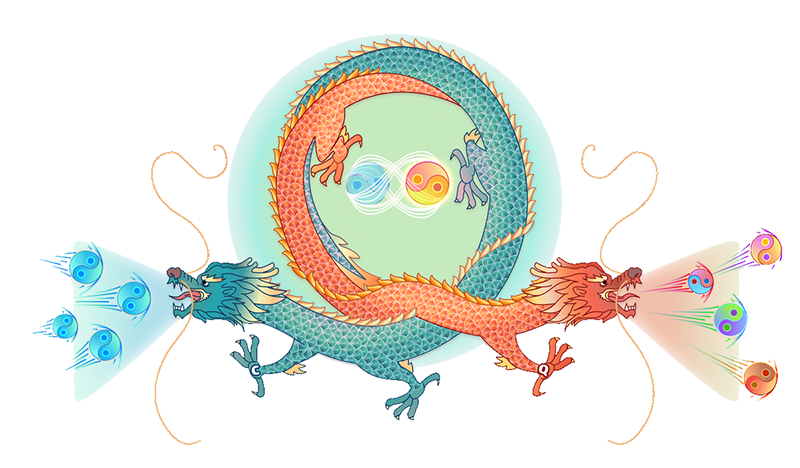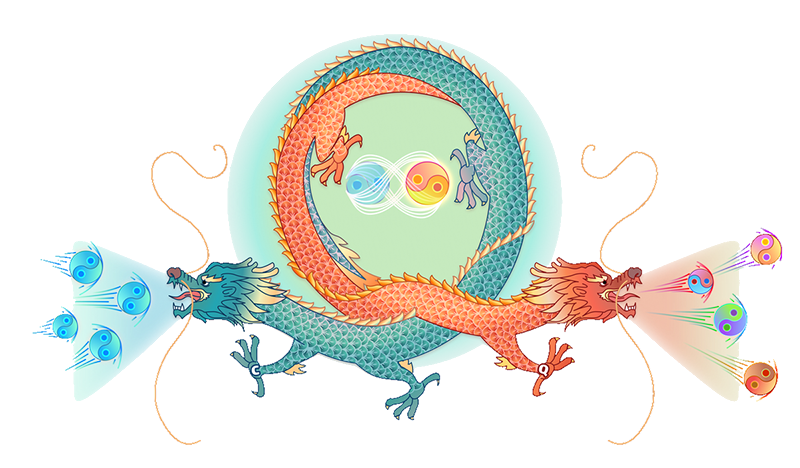A New Source for Quantum Light
Quantum light sources produce entangled pairs of photons that can be used in quantum computing and cryptography. A new experiment has demonstrated a quantum light source made from the semiconductor gallium nitride. This material provides a versatile platform for device fabrication, having previously been used for on-chip lasers, detectors, and waveguides. Combined with these other optical components, the new quantum light source opens up the potential to construct a complex quantum circuit, such as a photonic quantum processor, on a single chip.
Quantum optics is a rapidly advancing field, with many experiments using photons to carry quantum information and perform quantum computations. However, for optical systems to compete with other quantum information technologies, quantum-optics devices will need to be shrunk from tabletop size to microchip size. An important step in this transformation is the development of quantum light generation on a semiconductor chip. Several research teams have managed this feat using materials such as gallium aluminum arsenide, indium phosphide, and silicon carbide. And yet a fully integrated photonic circuit will require a range of components in addition to quantum light sources.
With the aim of eventually building such a full circuit, Qiang Zhou of the University of Electronic Science and Technology of China and colleagues put their sights on gallium nitride. This material is well known for its use in the first blue LEDs—a development that was recognized with the 2014 Nobel Prize in Physics (see Notes from the Editors: Blue Was the Hardest Color). Recent work has shown that gallium nitride grown on sapphire can be used for a number of quantum-optical functions, such as lasing, optical filtering, and single-photon detection. “The gallium nitride platform offers promising prospects for advancing photonic quantum chips in the near future,” Zhou says.
To create a gallium nitride quantum light source, Zhou and colleagues grew a film of the material on a sapphire substrate and then etched a 120-µm-diameter ring in the film. In this structure, photons can travel around the ring, similar to the way that sound waves travel around the curved walls of a whispering gallery (see Viewpoint: Tiny Resonators Generate a Large Optical Spectrum). Next to the ring, the researchers etched a waveguide for transmitting infrared laser light. A coupling between the two optical elements allows some laser photons to pass from the waveguide into the ring.
In the experiments, a detector recorded the spectrum of the waveguide’s output light, revealing discrete dips at multiple wavelengths. Those dips corresponded to resonances in the ring—when a particular photon’s wavelength fits an integer number of times within the ring’s circumference. Resonant photons in the waveguide can enter the ring and become trapped inside.
However, thanks to an effect called four-wave mixing (see Synopsis: Photonic Matchmaking), pairs of resonant photons entering the ring can sometimes annihilate, causing a new pair of resonant photons (at different wavelengths) to be created and exit through the waveguide. The two photons in each exiting pair are expected to be entangled with each other. To verify this entanglement, the team performed measurements on pairs of coincident photons, showing that they generate an interference pattern—stripes of light and dark fringes—when imaged. (By contrast, nonentangled pairs would produce one broad, bright spot.)
The level of interference—characterized by the amount of contrast between light and dark fringes—is a measure of the degree of entanglement of the photons. The degree of entanglement produced by the gallium nitride ring was comparable to the level measured for other quantum light sources, Zhou says. “We demonstrate that gallium nitride is a good quantum material platform for photonic quantum information, in which the generation of quantum light is crucial,” he says.
“Quantum optics has evolved with a tremendous pace in recent years,” says quantum optics expert Thomas Walther from the Technical University of Darmstadt in Germany. He says that moving forward will require components that are small, robust, efficient, and relatively easy to manufacture. To this end, Zhou and his colleagues have demonstrated that gallium nitride is a promising material for making the pump source, the quantum light source, and the single photon detectors. Having one platform for all these devices “would constitute a major step forward, as this could reduce the cost for manufacturing such systems, as well as make them much more compact and rugged than they are today,” he says.
–Michael Schirber
Michael Schirber is a Corresponding Editor for Physics Magazine based in Lyon, France.
References
- H. Zeng et al., “Quantum light generation based on GaN microring toward fully on-chip source,” Phys. Rev. Lett. 132, 133603 (2024).






